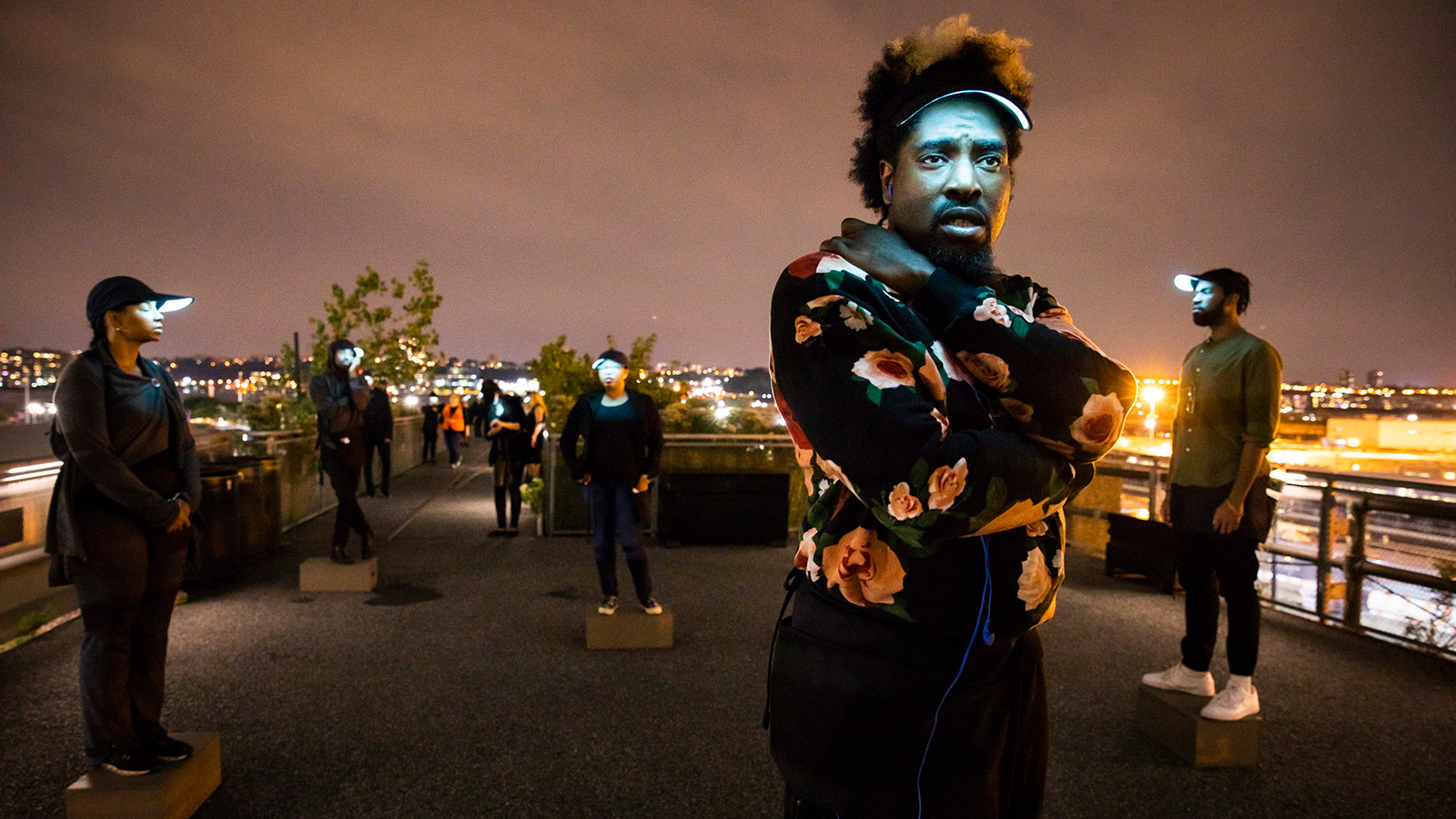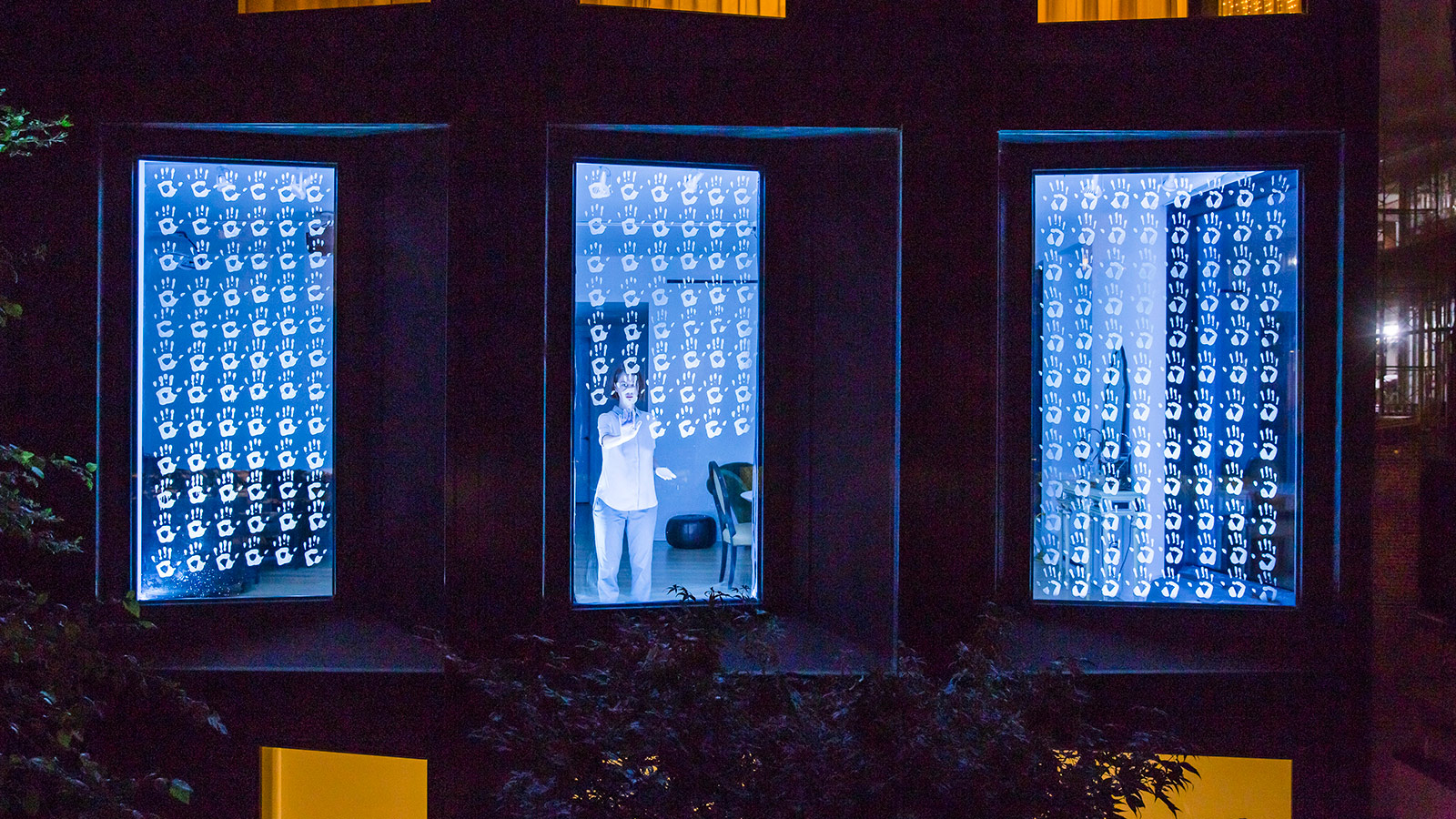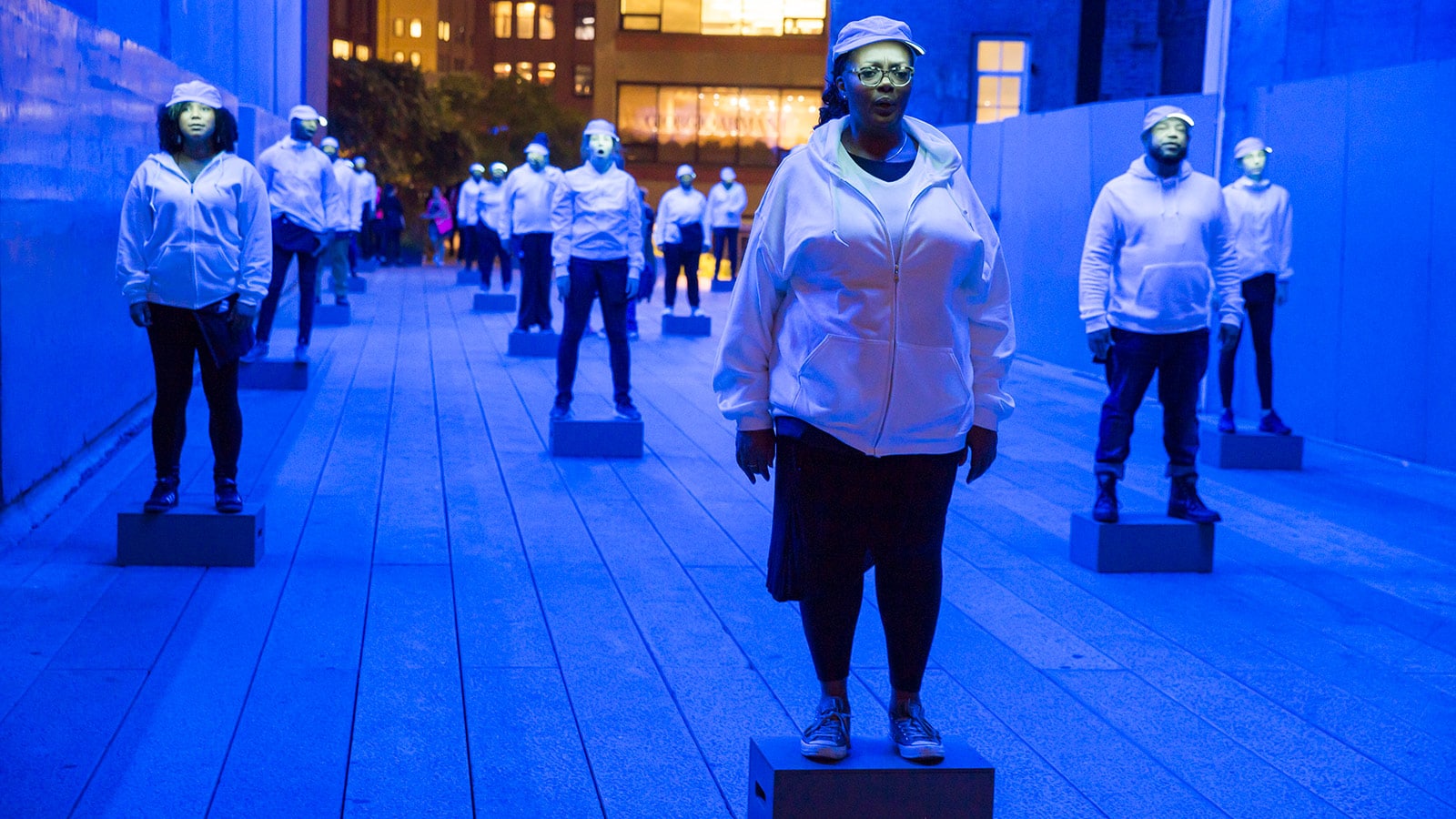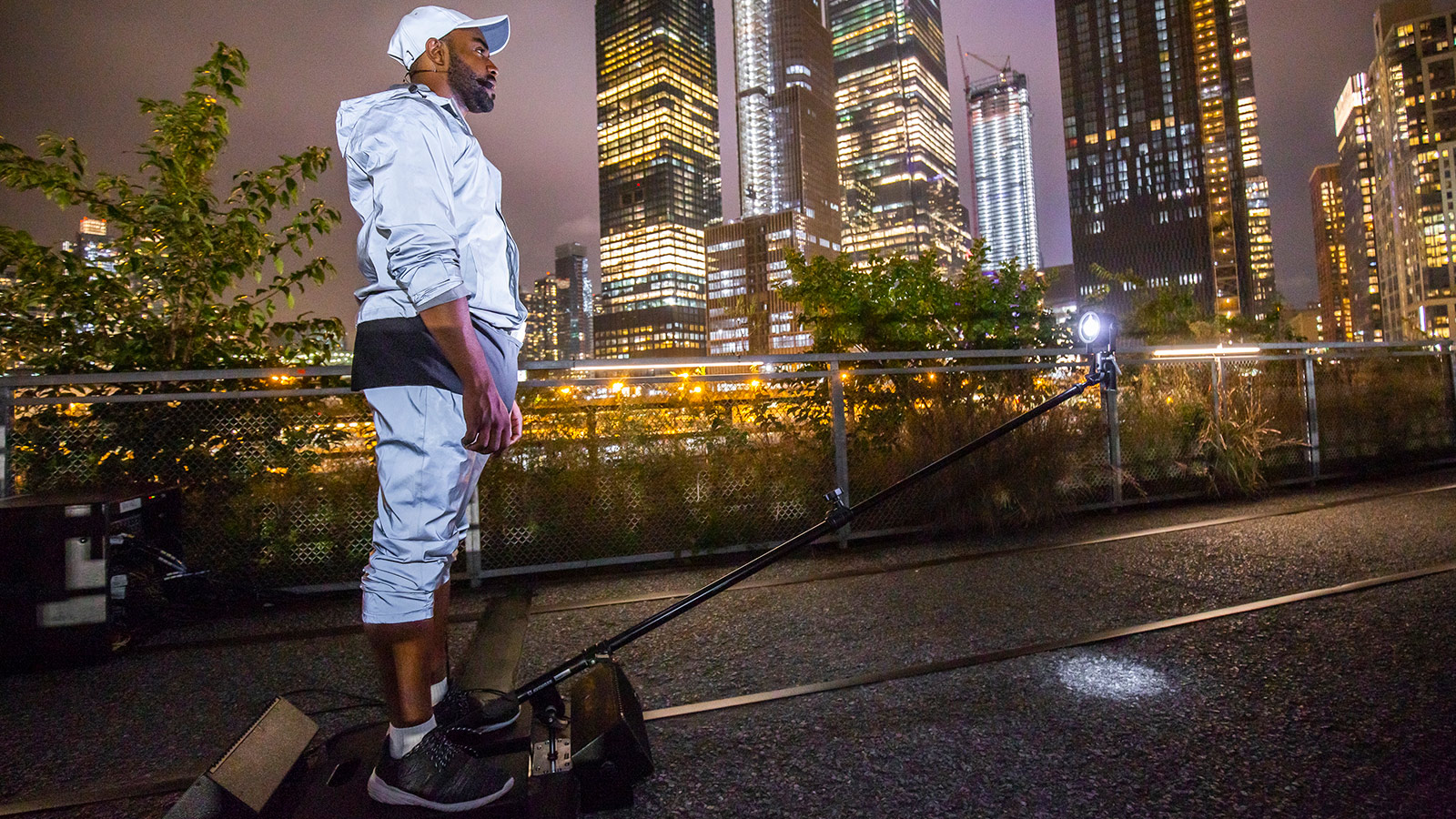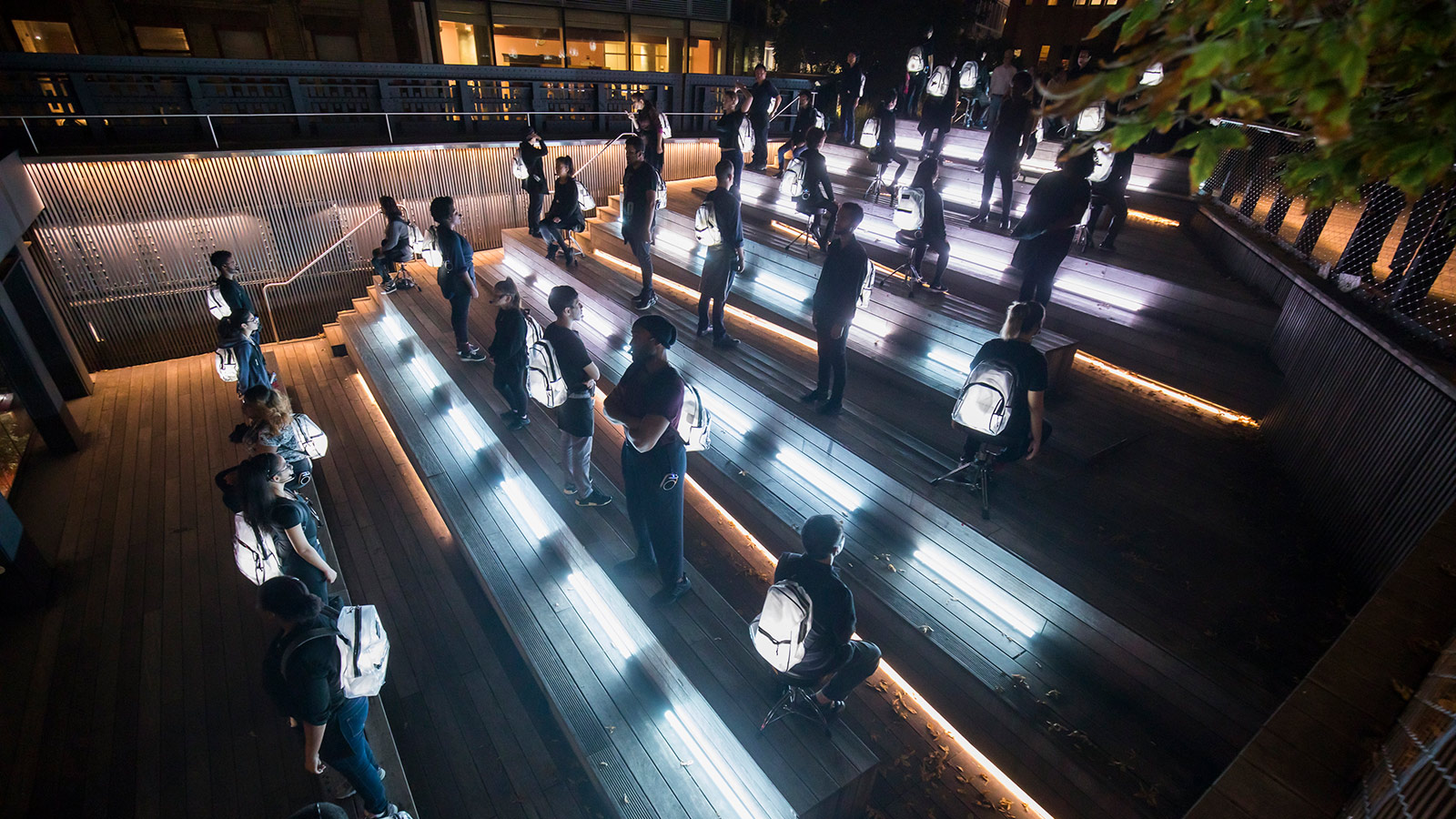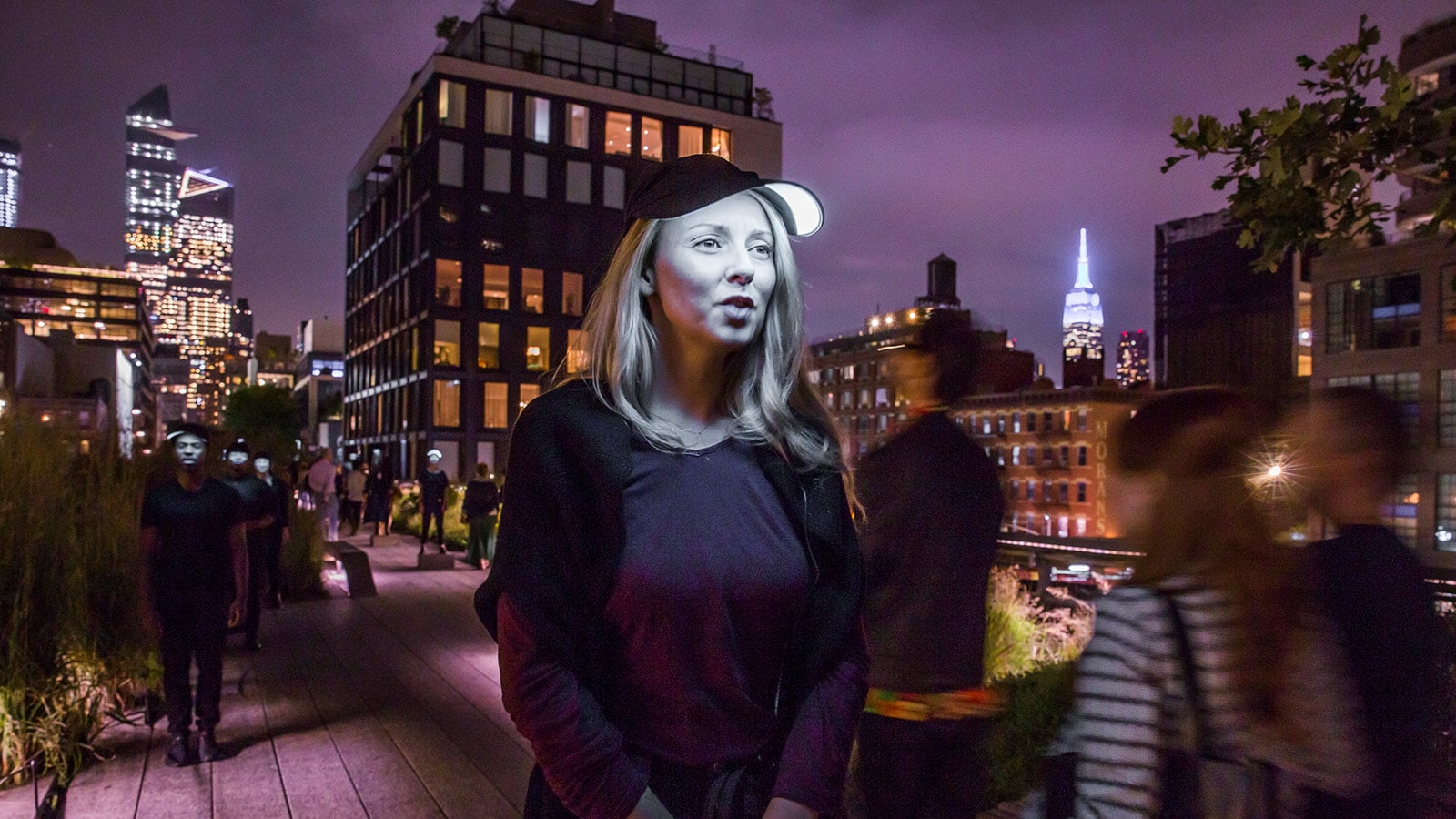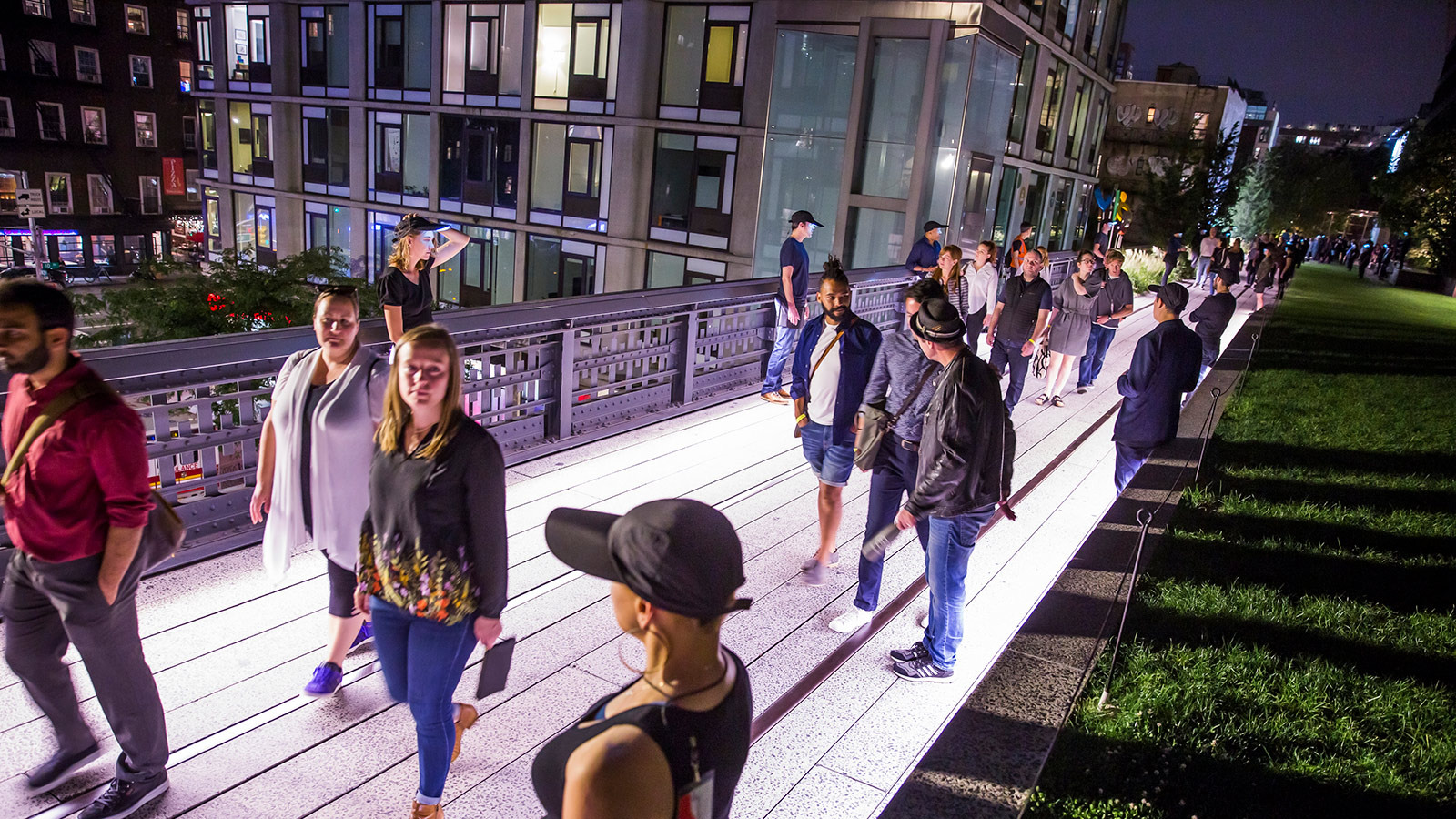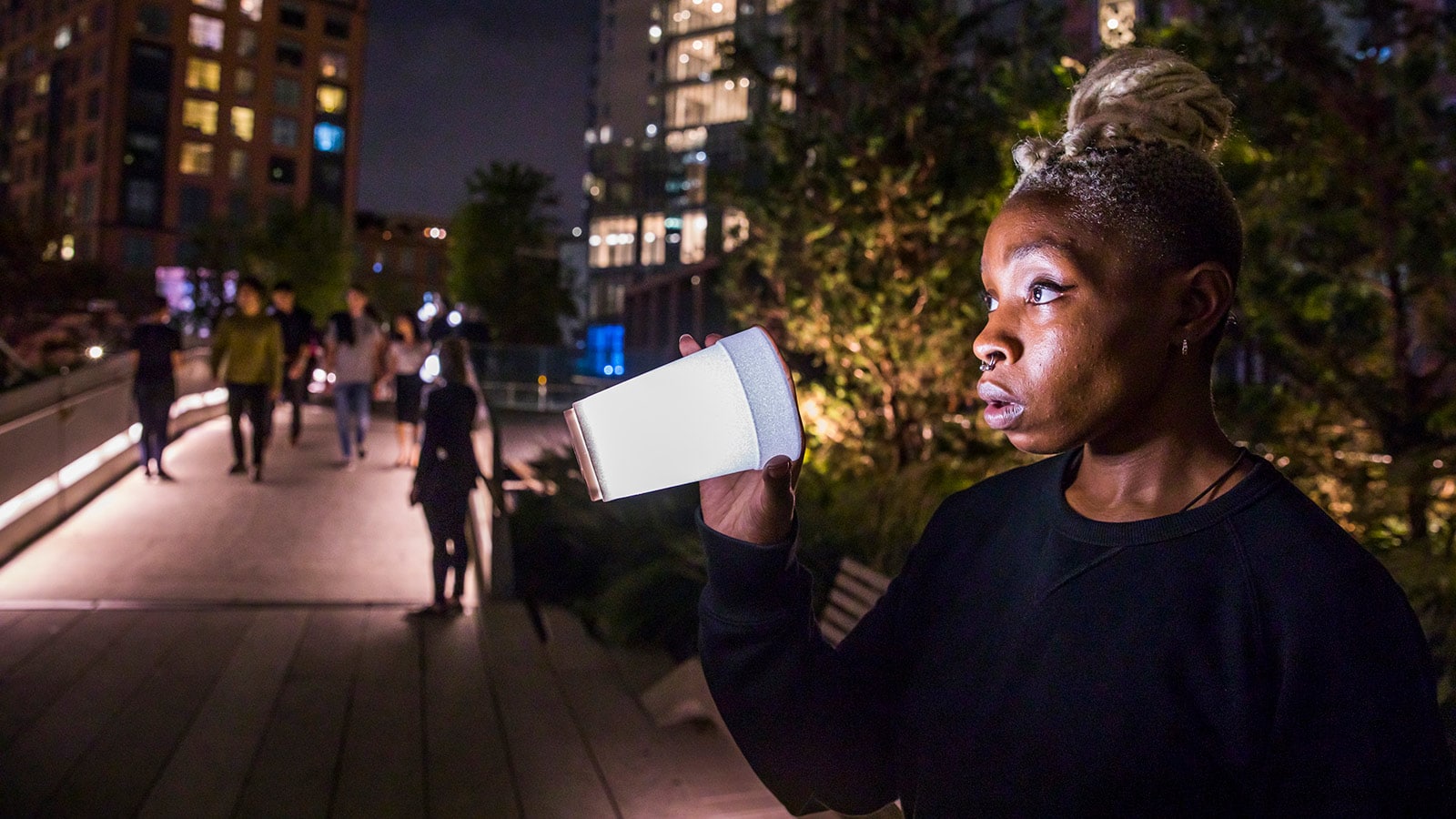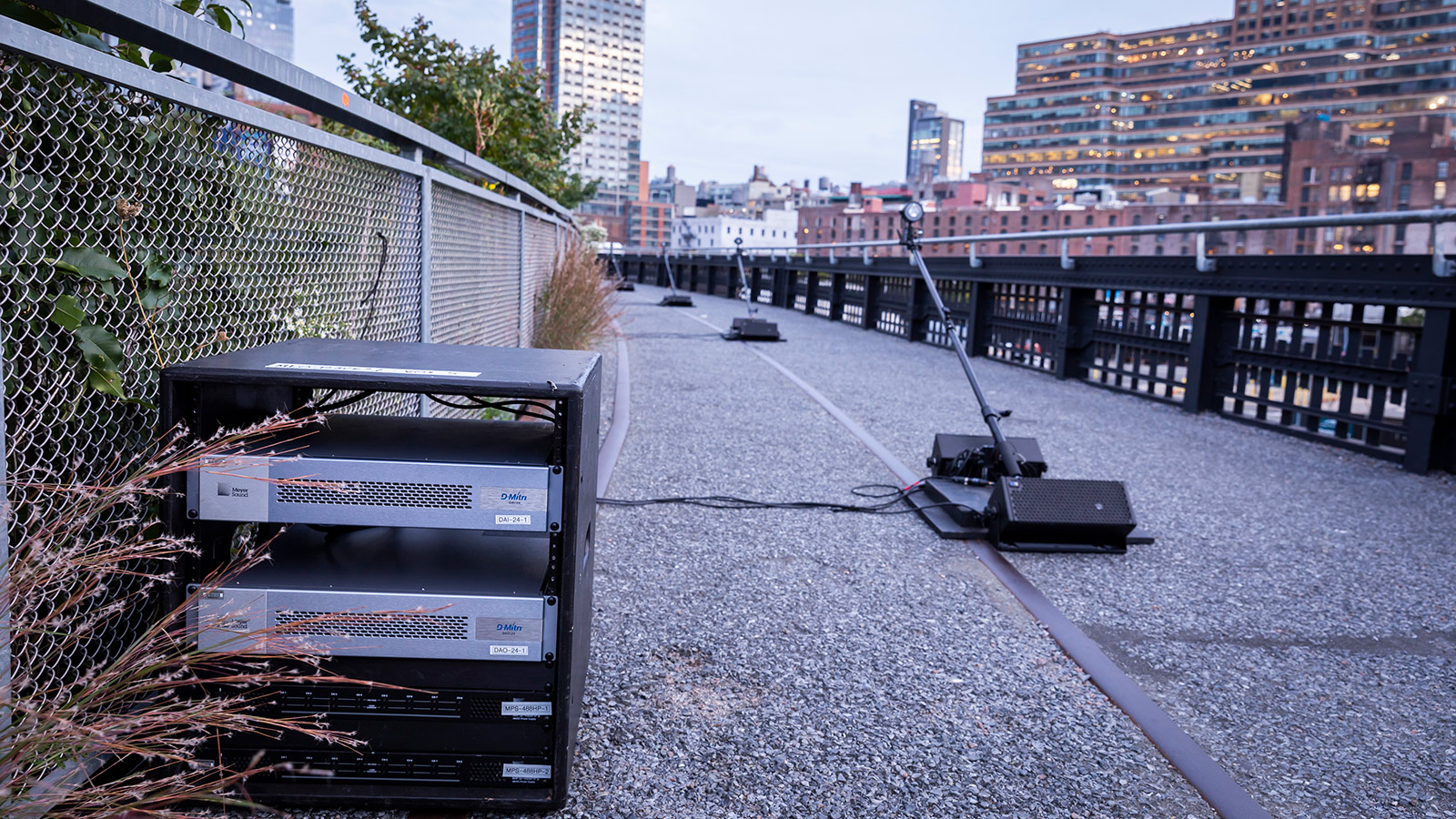The UP-4slims turned out to be perfect for this application. We had a variety of singers —men and women, some loud and some very soft — with different vocal qualities across the spectrum — and in every case these loudspeakers reproduced the voices beautifully and accurately.”
Jody ElffSound Designer
Featured Products
D-Mitri, UP‑4slim, UP-4XPA quintessential “only in New York” event, The Mile-Long Opera placed more than 1,000 stationary vocalists singly and in groups along the city’s High Line linear park for six nights in early October. The sellout audiences entered the park — a brilliantly repurposed stretch of elevated railway — and progressed as pedestrians through the 25 “acts” of the opera. Most of the singers performed without amplification, but for the final quarter-mile stretch through a district with high ambient noise, the solo vocalists were reinforced and enhanced using a system of 64 discreet Meyer Sound loudspeakers driven and controlled by a networked D-Mitri digital audio platform. The system was provided and deployed by Sound Associates of Yonkers, New York.
Formally titled “The Mile-Long Opera: a biography of 7 o’clock,” the ambitious work was conceived by Pulitzer Prize-winning composer David Lang and famed architect Elizabeth Diller, with text by Anne Carson and Claudia Rankine. Diller’s trailblazing architectural firm, Diller Scofidio + Renfro, was a co-creator of the High Line park, which first opened in 2009.
To tackle the tricky task of reinforcing the work’s finale, composer Lang tapped sound designer Jody Elff, a regular collaborator on earlier projects with the contemporary classical ensemble, Bang on a Can.
“For Mile-Long Opera, David had composed music pieces that could be repeated as essentially live, looping collages,” explains Elff. “Each piece was assigned to a stretch of the High Line. The final — and therefore critically important — piece would be on what we called Area 26, which runs between the Hudson rail yards and the six-lane thoroughfare of 12th Avenue, with an active heliport just beyond the street. We realized we would need reinforcement here, but we wanted to maintain the personal, intimate connection to each singer, with each voice retaining its distinct individuality.”
The solution was to place two small loudspeakers at the feet of each vocalist, with one loudspeaker facing forward and one behind, reproducing only the voice of that singer. The output level of each loudspeaker had to be individually tailored to account for variable spacing between singers, and with the rear speaker attenuated compared to the front to complement the front-to-back difference in the direct voice levels.
For the individual voices, the Area 26 system comprised a total of 56 ultra-compact UP-4XP and UP‑4slim loudspeakers, the latter a newly introduced model housed in a thinner aluminum cabinet but with essentially the same internal components.
“The UP-4slims turned out to be perfect for this application,” says Elff. “We had a variety of singers —men and women, some loud and some very soft — with different vocal qualities across the spectrum — and in every case these loudspeakers reproduced the voices beautifully and accurately. Other than some high pass filtering to limit wind noise, we didn’t need any EQ to blend the loudspeakers with the live direct sound.”
“The compact size and minimal weight also were an advantage,” says Elff. “We had to strike the whole system and put it in storage between performances. Everything had to be hand carried or rolled on cart, often for a considerable distance.”
Each singer was fitted with a DPA 4088 headset microphone which fed directly into a discrete input of the AVB-networked D-Mitri digital audio platform. The eight equipment racks held, in total, four DAI-24 analog input modules, four DAO-24 analog output modules, one DCP core processing module, one DCM matrix module, and a DWTRX Wild Tracks module to record each voice individually for post-production of the 360-degree video.
“Though it seems simple on the surface this really was an enormous matrixing challenge, far beyond what you could do with any reasonably compact console,” says Elff. “When we presented this to Meyer Sound, they explained D-Mitri was perfect for this. It accommodated everything we needed it to do. If you needed more inputs or outputs, just pop another module on the network. And Meyer Sound’s Richard Bugg was invaluable throughout this project, getting everything up to speed under tremendous time pressure.”
To bring the entire Mile-Long Opera experience to a fitting culmination, Elff presented composer Lang with the idea of blending voices into a chord and routing through separate loudspeakers as the audience passed the last group of singers called “The Blend.” Then, after the last singers but before the exit patrons heard a subtly processed, acoustically diaphanous mix of voices called “The Cloud.” Each effect was reproduced through separate sets of UP-4XP loudspeakers.
“The ‘Blend’ retained more of a sense of individual qualities,” explains Elff, “where the ‘Cloud’ was a more abstracted, subtle experience. For the last 200 feet or so, you heard this harmonic suspension at a low level where you couldn’t be sure if it was lingering sounds from the singers or just your memory as the voices faded into the ambient sounds of New York City. It was a remarkably effective closing experience.”
The only other amplification was in Area 16, where five Meyer Sound UM-1P loudspeakers where positioned at the feet of the singers where the High Line elevates up a metal grate. A level boost was needed as the singers had to be positioned 40 feet below and to the side of the pathway.
Working with Elff on behalf of The Mile-Long Opera was Max Helbrun, while Michael Brown of Meyer Sound assisted Richard Bugg. Heading the team for Sound Associates were Jorge Muelle, Tom Salyer, Eric Fredericks and Eduardo Santiago.
In addition to his long association with Bang on a Can, Jody Elff works regularly in recording and sound reinforcement for classical and chamber music groups, notably Silkroad, founded by Yo-Yo Ma. He also has worked with avant-garde musicians Laurie Anderson and Meredith Monk, designed site-specific sound installations, and mixed live music broadcasts for major network TV shows.
The 1,000-plus singers performing The Mile-Long Opera included both professional and amateur soloists as well as more than 40 church, school and community choirs drawn from all five boroughs of New York City, creating a remarkable, immersive experience shared by performers and the thousands who walked through the event against the backdrop of New York City.

